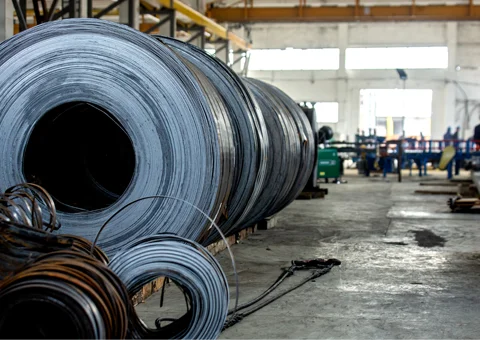Last week, EUROFER published its Economic and Steel Market Outlook for 2024/2025 (Q2 Report). If you read it without reflection, you might think that the EU steel industry is still struggling. But is that really the case? Or is this just an attempt to conceal the fact that there is now an average shortfall of 16 million tonnes of steel per year? And Japan’s TOPIX share index at a record high.
Japan’s TOPIX share index at record high
Two and a half weeks ago, the broad Japanese share index TOPIX broke through its highest level last reached in 1990 and reached a new record high in yen terms. The performance of the index was driven by exports, which expanded year-on-year for the seventh consecutive month in June, as well as domestic consumption. Retail sales rose by three per cent in May.
As a result, companies have funds for share buyback programmes, the volume of which at 10 trillion yen (60 billion euros) already exceeds the record level of the whole of last year.
Although the yen could appreciate somewhat – with interest rates falling in the USA and Europe in the future – and create some headwind for the export-orientated sectors of the Japanese economy, real wage growth should ensure additional purchasing power for households and a strengthening of the domestic economy as inflation rates continue to fall. According to Deutsche Bank analysts, the TOPIX could therefore have further upward potential in the medium term.
The EU faces a shortage of 16 million tonnes of steel per year
Last week, EUROFER published its Economic and Steel Market Outlook for 2024/2025 (Q2 Report). If you look at this regular report without reflection, which is of course what the accompanying press release is intended for, then you could easily get the impression that the message EUROFER is trying to convey here could be true. But is that really the case?
Bad data brings subsidies
After all these years, you can hardly blame EUROFER for doing its job to the full on behalf of the EU steel manufacturers and thus presenting the worst possible picture of the state of the steel companies it represents. And statistics can always be read in one direction or the other in order to make political capital out of half-truths. For example, with regard to a new ‘Clean Industrial Deal’ proposed by Ms von der Leyen even before the start of her second term as Commission President.
Apparent steel consumption vs. real steel consumption
One of EUROFER’s most important instruments in the battle for political influence is steel consumption in the EU. For some time now, EUROFER has only focussed on apparent steel consumption, which is derived from data provided by EU steel producers. Real steel consumption in the EU, on the other hand, is now only stated by the lobby organisation in percentage changes and comparative periods. This can of course be done, but it is also one of the half-truths mentioned above.
Up to 16 million tonnes of steel are missing in the EU every year
If the real steel consumption in the EU were to be openly communicated by EUROFER, this would reveal that domestic steel manufacturers are unwilling or unable to meet the demand from the processing industry despite significantly higher demand in the EU core market. The shortage in the domestic market, which now has to be compensated for by imports from Non-EU-countries, has averaged 16 million tonnes per year since 2022. Compared to previous years, the shortfall was just around 2 million tonnes. This makes it difficult to get even one more market protection measure through in an argumentative and credible way.
The significantly lower figure of 131 million tonnes on average that is communicated for apparent steel consumption is therefore much more useful for the narrative spread by EUROFER and its members than the real consumption or demand of more than 147 million tonnes of steel per year.

